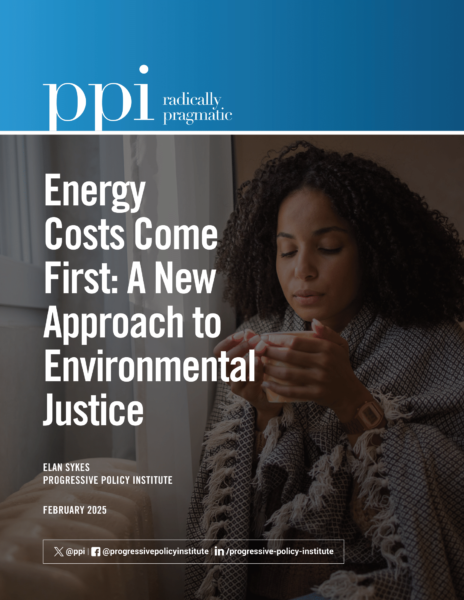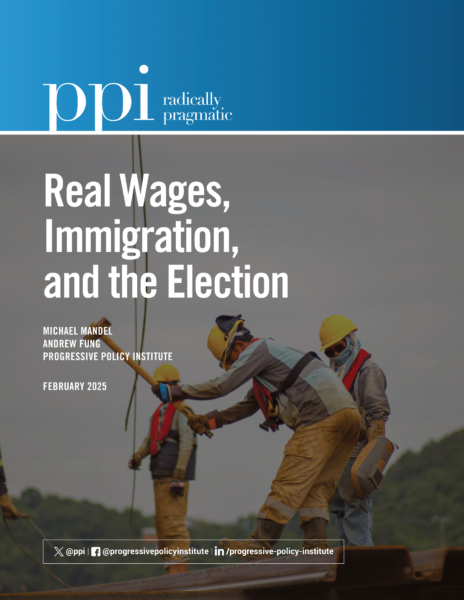FACT: Extra tariff costs for Valentine’s Day in 2026: $2.5 billion?
THE NUMBERS: Valentine product tariffs, now and (maybe) in 2026 –
| 2025 | 2026? | |
| Corset: | 23.5% | 43.5%? |
| Rose: | 6.5% | 26.5%? |
| Chocolate (boxed confectionery) | 5.6% | 25.6%? |
| Gold jewelry with diamonds | 5.0% | 25.0%? |
WHAT THEY MEAN:
Having dropped his campaign-era “stabilize prices and quickly bring down costs,” Mr. Trump’s plan — short form, “there may be some pain” — appears to be threatening tariffs against all and sundry: Colombia, steel, Canada, medicine, small packages, China, etc. We did predict this, and will look at the industrial side in a week or two in light of recent experience. (In short, with steel and aluminum in the news, the main result of the 2018 steel and aluminum tariffs appears to be a ~10% drop in U.S. use of the two metals.) But this Valentine’s eve, here’s a seasonal forward look at what lovers might expect.
The National Retail Federation predicts $27.5 billion in Valentine’s Day spending this year: $14.8 billion on the long-stemmed reds, the dark chocolate, the bling, and the scraps of silk, plus $6.8 billion on cards and evenings out and $6.9 billion on other miscellaneous gifts and entertainment. Using NRF’s predictions and administration hints at a worldwide 20% tariff, the “some pain” program seems likely to raise next year’s V-Day costs by about $2.5 billion. Here’s an explanation, starting with some practical background on tariff payments and how they affect retail prices, and then a look at the four standards:
A tariff is a tax on purchases of goods from abroad, paid by the U.S. buyer — a business or an individual — to Customs and Border Protection. For industrial buyers like auto parts manufacturers or home-builders, the check is part of production cost. For retailers like florists and lingerie shops, it’s part of the “landed cost” from which they mark up to the store price. Taking the hypothetical sweater example in PPI’s Joint Economic Committee testimony last month, and converting appropriately for the season:
Consider a container of $100,000 worth of these sweaters corsets, hypothetically valued at $10 each, arriving at the Long Beach container port from Vietnam this week for a retailer’s Christmas Valentine selection. As the cranes move the container from ship to truck, the buyer reports the arrival to Customs and Border Protection and writes the agency a $19,700 $23,500 check, reflecting the 19.7% 23.5% tariff assigned to the sweaters corsets under HTS line 61051000 62123000. The price increase works like this:
|
Corset purchase from manufacturer |
$100,000 |
|
Shipping bill from maritime carrier |
$5,000 |
|
Retailer’s MFN tariff payment to CBP |
$23,500 |
|
Total “landed cost”: |
$128,500 |
The buyer then marks up from this $128,500 “landed cost” to profit a bit on each article. In this case, the 23.5% tariff raises the landed cost, and a few days later, the cash register price, by about 22.8%. Dumping another 20% tax on top of this — another $20,000 check — raises the landed cost to $148,500, meaning tariffs would hike store prices by 46%. Assuming tariffs raise store prices by a similar 90% of the actual tariff rate (though in practice this would vary based on freight costs — likely a bit higher for land cargo, and a bit lower for air freight):
Roses: Valentine flower spending is $2.9 billion, roughly a tenth of NRF’s $27.5 billion total. February being a winter month, America’s 11,600 florists buy abroad: about two-thirds of the roses come from Colombia, and most of the rest from Ecuador. Colombian blooms get no tariff — there’s a free trade agreement — while buyers of Ecuadoran roses pay 6.5%. The florists pay about $140 million for flowers in the January/February season, and write CBP tariff-payment checks totaling about $7 million. Had Mr. Trump followed through on his 50% tariff threats against Colombia three weeks ago, they would have taken a $70 million hit, and the store price of a dozen long-stemmed reds would likely have jumped from the roughly $90 current national average to around $125 or $130. Next February, a 20% overall tariff would raise flower prices by perhaps $500 million.
Chocolate: All commercial chocolate ultimately comes from abroad — mostly from West Africa. Patterns are complex, with U.S. chocolatiers buying lots of cocoa beans and paste to make candy and syrup, retailers bringing in boxes of high-end European confectionery, and the chocolate trade regime a maze of sugar and dairy quotas as well as tariffs. To simplify, chocolate confectionery has a 5.6% tariff and import value of $1.3 billion last year. A 20% new tariff might cost buyers $220 million for confectionery only, or $400 million if it hits early enough to raise U.S. manufacturers’ bean, butter, and paste costs.
Diamonds: Jewelry purchases come to $6.5 billion. As with chocolate, virtually all gems come from abroad — diamonds mainly from kimberlite pipes beneath Botswana and South Africa, and colored stones variously from Colombia (emeralds), Thailand and Sri Lanka (sapphires), and Thailand, Cambodia and Myanmar (rubies). Uncut gems are duty-free, while jewelry usually has tariffs from 5.0% to 6.5%, depending on the metal involved. A 20% tariff might hike costs by a billion dollars, depending again on whether it hits early enough to hit New York diamond-cutters as well as jewelry retail.
Lingerie: Lingerie spending by NRF’s estimate will be about $1.6 billion. Asian seamstresses stitch most of the ladies’ underwear worn in the United States, with China providing half and Indonesia, Sri Lanka, Thailand, Vietnam, and Cambodia most of the rest. Trade policy is puritanically tough here, with underwear tariffs averaging 13% — nearly six times the overall U.S. 2.4% average — and (as we’ve earlier noted with strong disapproval) quietly taxing women’s at 15.5% and men’s only 11.5%. With annual lingerie tariff charges already about $650 million, a new 20% tariff might raise prices by $1 billion.
In sum: In love gifts as in industrial metals, the likely outcome is higher prices, then less purchasing. Money isn’t everything, of course. If they’re priced out of higher-cost roses and jewelry next February, younger and lower-income couples can still exchange cards and remind each other that “it’s the thought that counts.” But they might also want to know who’s responsible.

FURTHER READING
The USITC on steel and aluminum.
… NRF’s 2025 V-Day forecast.
PPI background:
December testimony to the Joint Economic Committee on likely impacts of tariff hikes.
On tariffs and prices, from last August: “Trust Alice, not the Queen.”
And our four principles for response to tariffs and economic isolationism. TL/DR:
-
Defend the Constitution and oppose attempts to rule by decree.
-
Connect tariffs and trade policy to growth, work, prices and family budgets, and living standards.
-
Stand by America’s neighbors and allies.
-
Offer a positive alternative.
More on flowers:
Our Valentine’s look last year at rose trade.
And 2025 advice from the Society of American Florists.
More on gems:
Still duty-free for now — the Bangkok Gem and Jewelry Fair opens next week.
You probably can’t afford this one even without a tariff — the Motswedi, a 2,492-carat Botswana diamond found last summer.
More on chocolate:
Top-end French chocolatier Valrhona.
Ghana’s Cocoa Board on chocolate history worldwide and in West Africa:
And an underwear reprise:
Washington Post writer Catherine Rampell on our 2023 V-Day blast against the unfair, gender-biased U.S. underwear tariff system.
ABOUT ED
Ed Gresser is Vice President and Director for Trade and Global Markets at PPI.
Ed returns to PPI after working for the think tank from 2001-2011. He most recently served as the Assistant U.S. Trade Representative for Trade Policy and Economics at the Office of the United States Trade Representative (USTR). In this position, he led USTR’s economic research unit from 2015-2021, and chaired the 21-agency Trade Policy Staff Committee.
Ed began his career on Capitol Hill before serving USTR as Policy Advisor to USTR Charlene Barshefsky from 1998 to 2001. He then led PPI’s Trade and Global Markets Project from 2001 to 2011. After PPI, he co-founded and directed the independent think tank ProgressiveEconomy until rejoining USTR in 2015. In 2013, the Washington International Trade Association presented him with its Lighthouse Award, awarded annually to an individual or group for significant contributions to trade policy.
Ed is the author of Freedom from Want: American Liberalism and the Global Economy (2007). He has published in a variety of journals and newspapers, and his research has been cited by leading academics and international organizations including the WTO, World Bank, and International Monetary Fund. He is a graduate of Stanford University and holds a Master’s Degree in International Affairs from Columbia Universities and a certificate from the Averell Harriman Institute for Advanced Study of the Soviet Union.







